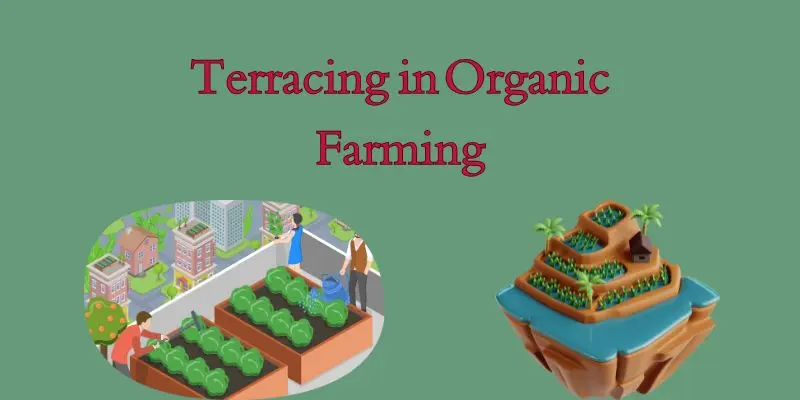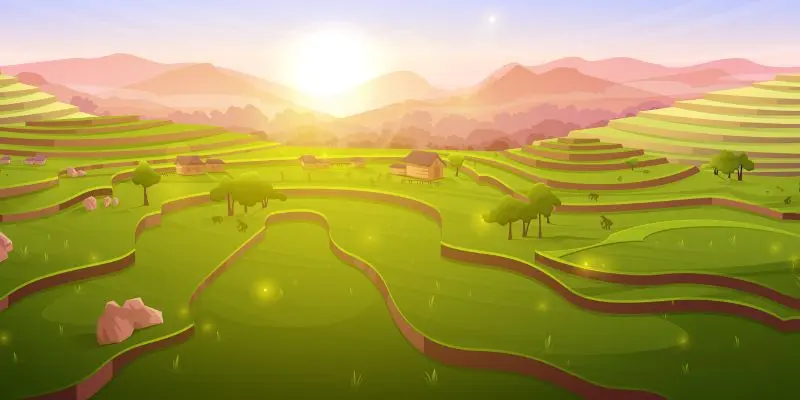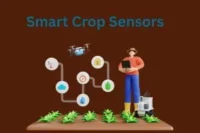Terracing in Organic Farming: A Sustainable Solution for Soil Health and Crop
Published: 29 Apr 2025
Terracing in organic farming is a time-tested method of cultivating sloped land by creating a series of level steps or platforms. This technique is used to combat one of the biggest challenges in agriculture: soil erosion. According to the United Nations, soil erosion is responsible for the loss of up to 75 billion tons of soil annually, threatening global food security.
So, guys, without wasting time, let’s jump into the article to learn the Terracing in Organic Farming: A Sustainable Solution for Soil Health and Crop
What is Terracing in Organic Farming?
Terracing in organic farming is a soil and water conservation technique used to transform sloped land into level planting areas. Here’s how it works and what it involves:

- Terrace Formation:
The land is cut and shaped into horizontal steps or flat platforms on a slope, each with a slight incline to control water flow. - Retaining Structures:
Each terrace is supported by a wall or embankment, built from soil, rocks, or vegetation, to hold the structure in place and prevent collapse. - Water Management:
Terraces slow down rainwater, reduce runoff, and allow water to infiltrate the soil, improving moisture retention and reducing erosion. - Soil Conservation:
The flat surfaces minimize the loss of topsoil and keep nutrients intact, crucial for organic farming that avoids synthetic fertilizers. - Crop Cultivation:
Terraces provide usable planting space on steep slopes, expanding arable land for growing food organically and sustainably. - Environmental Impact:
Terracing helps maintain ecological balance by preventing land degradation, supporting biodiversity, and reducing reliance on external inputs.
Benefits of Terracing in Organic Farming
Terracing offers a practical solution to many challenges faced in organic farming, especially on sloped or erosion-prone land. By modifying the landscape to slow water flow and retain soil, it enhances productivity while preserving ecological balance.
- Soil Erosion Control:
- Prevents Soil Loss: Terracing minimizes water runoff, which helps prevent the topsoil from being washed away. This is especially important in areas with steep slopes.
- Promotes Soil Regeneration: By preventing erosion, terracing allows the soil to regenerate and retain its fertility.
- Water Retention and Conservation:
- Improved Water Infiltration: Terracing helps water absorb more easily into the soil rather than running off, making it easier to retain moisture.
- Reduction in Irrigation Needs: By maintaining moisture levels in the soil, terracing can significantly reduce the need for external irrigation systems, which is crucial in drought-prone areas.
- Enhanced Soil Fertility:
- Maintains Soil Structure: Terracing prevents erosion that often depletes the soil of vital nutrients. It helps in maintaining healthy soil structure, ensuring better conditions for crops.
- Improved Organic Matter Decomposition: Terraced soil can hold compost, organic matter, and fertilizers better, allowing the decomposition process to enhance soil fertility.
- Biodiversity Support:
- Supports Diverse Crops: Terraces create micro-environments that support a variety of crops, which is key to maintaining biodiversity on the farm.
- Encourages Beneficial Wildlife: By fostering diverse ecosystems, terracing attracts beneficial insects, birds, and other wildlife that help control pests and pollinate crops.
How Terracing Helps in Organic Farming
Terracing plays a vital role in organic farming by naturally managing soil and water without the need for synthetic inputs. It supports key organic principles like soil conservation, biodiversity, and sustainable land use, especially in sloped or erosion-prone areas.

- Natural Farming Approach:
- Terracing aligns with the principles of organic farming by using natural processes to enhance soil health, rather than relying on synthetic chemicals.
- Terracing reduces soil compaction and promotes better root development, which is crucial for organic crop health.
- Promotes Sustainability:
- By reducing water runoff and increasing soil fertility, terracing supports long-term sustainability and reduces dependence on external inputs.
- Helps farms become more resilient to climate change by improving water retention and reducing vulnerability to soil erosion.
- Maximizes Land Use:
- Terracing makes previously unusable sloped land cultivable, allowing farmers to increase their productive land area.
- This enables organic farmers to grow crops on land that would otherwise be unsuitable for traditional farming.
- Supports Soil Health:
- Terracing helps preserve soil biodiversity and supports microbial activity in the soil, which is essential for healthy crops in organic farming.
- The process helps regenerate the land and avoid the depletion of vital nutrients, unlike conventional farming practices that can lead to soil degradation.
Challenges of Terracing in Organic Farming
While terracing offers many benefits in organic farming, it also comes with practical challenges that farmers must consider. These include financial, labor, and environmental factors that can affect its implementation and long-term maintenance.
- Initial Costs and Investment:
- Labor and Material Costs: Building terraces requires initial investment in materials (e.g., stones, timber) and skilled labor for construction. These costs can be high, especially for larger farms.
- Maintenance Requirements:
- Terraces need regular maintenance, especially during the first few years, to ensure they don’t collapse due to erosion or weathering.
- Farmers must constantly monitor and repair any damage caused by extreme weather conditions or erosion.
- Not Ideal for All Land Types:
- Steep or Rocky Terrain: In areas with extremely steep or rocky land, building terraces can be difficult or even impractical.
- Soil Type Limitations: Terracing is less effective in regions where the soil structure is not suitable for water retention or where erosion is difficult to control.
- Time-Consuming Implementation:
- Constructing terraces on large-scale farms can take time, especially in hilly regions where the slopes need to be carefully shaped.
Case Studies: Successful Implementation of Terracing
- Farm 1:
- Location: In the Andes mountains, a community of farmers used terracing to protect their crops from erosion and improve the fertility of the land. Over time, yields increased and soil health improved.
- Farm 2:
- Location: A rice farm in Southeast Asia successfully used terracing to manage water use more efficiently and maintain soil fertility, demonstrating how it can benefit water-intensive crops in organic farming.
References
According to the Food and Agriculture Organization (FAO), terracing is an effective method for controlling soil erosion and improving land productivity. Studies have shown it plays a crucial role in supporting sustainable and organic farming practices on sloped terrain
Author Name.
Global synthesis of the classifications, distributions, benefits and issues of terracing

- Be Respectful
- Stay Relevant
- Stay Positive
- True Feedback
- Encourage Discussion
- Avoid Spamming
- No Fake News
- Don't Copy-Paste
- No Personal Attacks

- Be Respectful
- Stay Relevant
- Stay Positive
- True Feedback
- Encourage Discussion
- Avoid Spamming
- No Fake News
- Don't Copy-Paste
- No Personal Attacks





